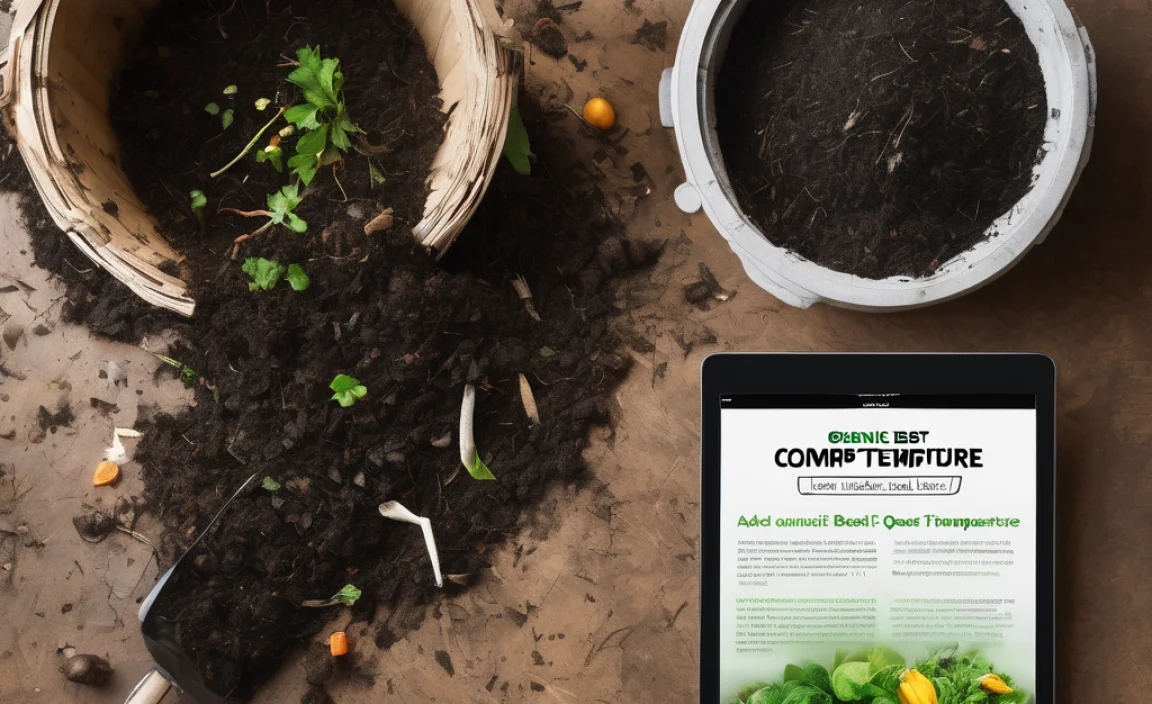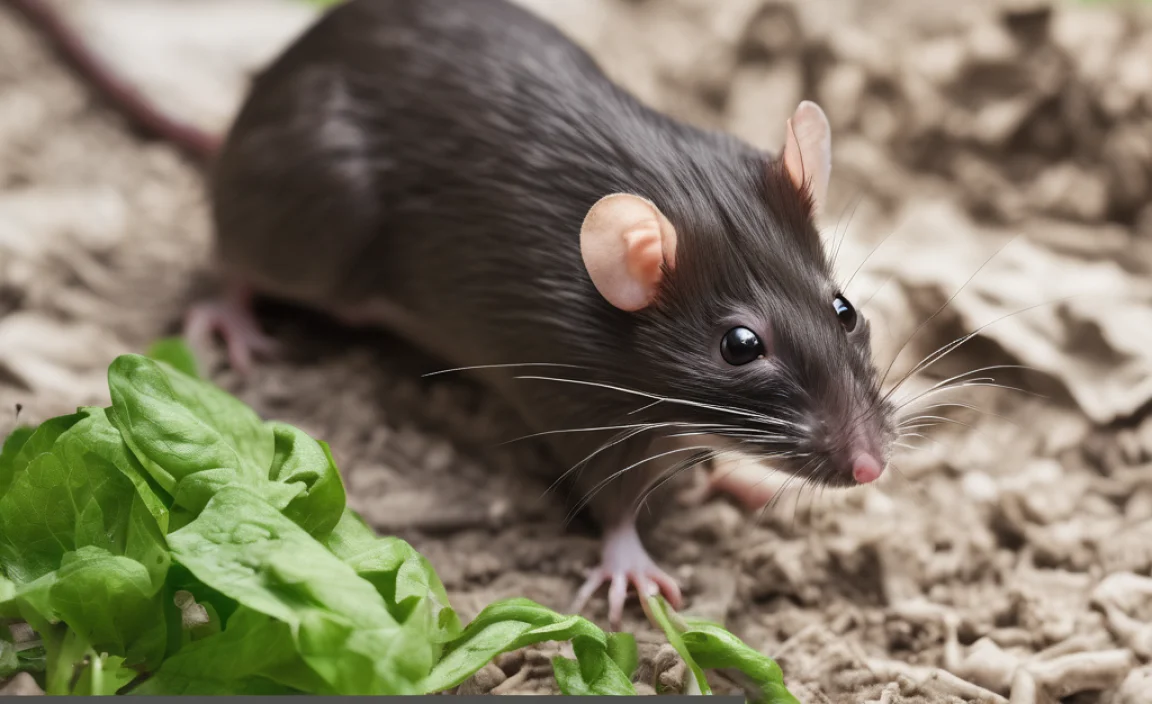Ever look at a pile of nutshells and wonder if they’re just trash? Many of us toss them out, thinking they’re no good. But guess what? Those tough shells can actually be a fantastic addition to your compost pile! They might seem a bit stubborn at first, but with a little know-how, you can turn them into valuable garden gold. This guide will show you exactly how to compost nutshells the easy way, so you can reduce waste and boost your garden’s health. Let’s get started!
Unlock the Power of Your Potentially Discarded Nuts: The Essential Nut Shells Composting Guide
Hey there, fellow home improvers and garden enthusiasts! Troy D Harn here, your go-to guy for making tough DIY and gardening tasks feel like a walk in the park. Today, we’re diving into something a little different, a bit surprising perhaps, but super rewarding: composting nut shells. You know, those tough outer casings from your favorite snacks like walnuts, pecans, almonds, and peanuts? They often end up in the bin, but they’ve got a secret life waiting to happen in your compost! Don’t worry if you’ve never thought about this before; I’m here to break it all down for you, step-by-step, so you can transform what seems like waste into a gardener’s best friend.
Why Bother Composting Nut Shells? The Undeniable Benefits
So, why should you bother with nutshells? Aren’t they just… shells? Well, it turns out they’re more than just a discarded husk. They offer some serious perks for your compost and, by extension, your garden.
- Nutrient Richness: While they break down slowly, nut shells do contain valuable minerals like potassium, phosphorus, and calcium. As they decompose, these nutrients are released into your compost, making it a more nutrient-dense amendment for your soil.
- Improves Soil Structure: Composted nut shells can help improve your soil’s drainage and aeration. Their fibrous nature, once broken down, creates tiny air pockets, which is great for plant roots.
- Reduces Waste: Let’s face it, we all want to be a bit more eco-friendly. Composting nut shells is a fantastic way to divert waste from landfills. It’s a simple, effective step towards a more sustainable lifestyle and a greener planet.
- Slow Release Fertilizer: Because they are tough, nut shells decompose slowly. This means the nutrients they hold are released gradually over time, providing a steady, sustained feeding for your plants rather than a quick, overwhelming boost.
- Pest Deterrent (Anecdotal): Some gardeners find that the sharp edges of certain types of uncomposted shells can deter slugs and snails from climbing up plant stems. While this isn’t their primary composting benefit, it’s a nice bonus for some!
The “Browns” and “Greens” of Composting: Where Do Nut Shells Fit In?
Before we get our hands dirty with nutshells specifically, let’s quickly recap the basics of composting. Think of your compost pile as a balanced meal for microorganisms. It needs two main types of ingredients:
- “Greens” (Nitrogen-rich materials): These are items like fruit and vegetable scraps, coffee grounds, grass clippings, and plant trimmings. They provide the nitrogen that microbes need to multiply and heat up the pile.
- “Browns” (Carbon-rich materials): These include dry leaves, shredded cardboard, newspaper, twigs, and, you guessed it, nut shells! They provide the carbon that fuels the decomposition process.
Nut shells are definitely in the “browns” category. They are dry, woody, and carbon-heavy. Getting the right balance of greens and browns is key to a healthy, efficient compost pile. Too many greens can make your pile slimy and smelly; too many browns can slow down decomposition significantly.
Types of Nut Shells: Are They All the Same for Composting?
Mostly, yes! The good news is that most common nut shells can be composted. However, there are slight differences in their decomposition rates and any potential issues:
General Compostable Shells:
- Walnut Shells: Very common and compostable. They can take a while to break down due to their hardness.
- Pecan Shells: Similar to walnuts, they are rich in carbon and break down slowly.
- Almond Shells: Another tough shell that adds good carbon.
- Peanut Shells: These are technically legumes, but their shells are also compostable and are considered browns. They tend to break down a bit faster than harder nuts.
- Hazelnut Shells: Robust and great carbon sources.
- Macadamia Nut Shells: Known for being tough and can take the longest to decompose.
Shells to Be Cautious With (or Avoid):
- Salted or Seasoned Nuts: If your nut shells are heavily salted or seasoned with spices, it’s best to avoid composting them. The salt can disrupt the microbial balance in your compost and potentially harm plants when you use the finished compost. If it’s just a light seasoning, and you’re not too concerned, you might get away with it, but it’s generally safer to stick to plain shells.
- Oiled or Greasy Shells: Similarly, avoid shells from nuts that were roasted in oil or have a significant greasy residue. This can attract pests and create an anaerobic (oxygen-poor) environment, leading to unpleasant smells.
Important Note on Black Walnut Shells: Some gardeners believe that black walnut shells contain juglone, a natural herbicide that can inhibit the growth of certain plants. While the levels in composted shells are usually low enough not to cause harm, if you’re planning to use the compost on sensitive plants, it’s wise to err on the side of caution and let the compost age for an extended period (over a year) or use these shells sparingly. Most horticultural sources suggest that the juglone leaches out and breaks down during composting.
The Showdown: To Chop or Not to Chop? Preparing Nut Shells for Composting
This is a big one! Nut shells are incredibly hard, and if you just toss them whole into your compost bin, they can take a very long time to break down – we’re talking years, potentially. To speed things up and ensure they integrate nicely, preparation is key.
Why Chop or Break Them Down?
The primary reason is surface area. The more broken down a material is, the more surface area is exposed to the microbes, moisture, and air in your compost pile. This dramatically speeds up decomposition.
Methods for Breaking Down Nut Shells:
- Hammer Time: This is probably the most straightforward method. Place the shells in a sturdy bag (like a burlap sack or a thick cloth bag) or an old pillowcase. Lay them on a hard surface like concrete or a sturdy workbench. Use a hammer to bash them into smaller pieces. Think pea- to dime-sized fragments. Safety Tip: Wear safety glasses to protect your eyes from flying shell shards!
- Rolling Pin or Mallet: Similar to the hammer method, a rolling pin or a meat mallet can also do the trick. You might have a little more control over the size of the pieces.
- Food Processor or Blender (Use with Caution!): For smaller quantities, a strong food processor or an older blender set to a pulse or grind setting might work. However, nut shells are robust and can dull blades or even damage less powerful machines. Use this method sparingly and know your machine’s limits. Aim for a coarse grind, not a powder.
- Crushing with Foot (Outdoor Only!): If you have a lot of shells, you can place them in a strong bag and carefully crush them underfoot on a hard outdoor surface.
- Buying Pre-Crushed: Some garden supply stores sell compostable materials that are already shredded or chipped. You might find products that incorporate nutshells this way.
My Recommendation: For most folks, the hammer method is the most reliable and accessible. It’s also quite satisfying to give those tough shells a good whack! Aim for pieces no larger than an inch (about 2.5 cm). The finer you can get them without turning them to dust, the faster they will compost.
The Composting Process: Integrating Nut Shells into Your Pile
Now that you’ve prepared your nut shells, it’s time to add them to your compost. Here’s how to do it right:
Best Practices for Adding Nut Shells:
- Don’t Overdo It: Remember, nut shells are browns and are quite dense. While beneficial, they shouldn’t make up the bulk of your compost. Aim for them to be no more than 10-20% of your total compostable material.
- Mix Them In: Don’t just dump a huge pile of crushed shells into your compost bin. Mix them thoroughly with your “green” materials (like kitchen scraps) and other “browns” (like dry leaves or shredded paper). Good mixing ensures they get good contact with the active microbes in the pile.
- Consider Your Compost Type:
- Hot Composting: If you’re actively “hot composting” (aiming for high temperatures to break things down quickly), ensure your crushed shells are well-integrated. They can help maintain that crucial carbon balance.
- Cold Composting: If yours is a more passive “cold composting” system where things break down slowly, crushed shells will also work, but they will take longer. Just be patient!
- Worm Composting (Vermicomposting): This is where it gets a bit tricky. Whole shells are too hard for worms to process. Crushed shells can be added, but in very small quantities. Worms primarily eat food scraps. The grit from crushed shells can help them grind food in their gizzards, but too much can be abrasive and potentially harmful. If you’re a worm composting beginner, I’d suggest holding off on nut shells until you’re more experienced, or adding only tiny amounts of finely crushed peanut shells as they are softer.
- Moisture is Your Friend: Hard materials like shells need moisture to help them soften and break down. Make sure your compost pile is kept consistently moist, like a wrung-out sponge.
- Aerate Regularly: Turning your compost pile regularly (every 1-2 weeks is great for hot composting, less often for cold) will expose the shells to oxygen, which is crucial for decomposition and prevents smelly, anaerobic conditions.
Troubleshooting: Common Issues with Composting Nut Shells
Even with the best intentions, you might run into a snag. Here are a few common issues and how to fix them:
- Issue: Shells aren’t breaking down after months.
- Solution: They’re likely too large, you’re not adding enough moisture, the pile isn’t hot enough, or you’re not turning it enough. Try breaking them down smaller, ensure the pile is moist, and turn it more frequently. If it’s a slow-composting pile, patience is also a virtue!
- Issue: My compost smells bad (like rotten eggs or ammonia).
- Solution: This usually means too much “green” material and not enough “browns,” or a lack of oxygen (anaerobic conditions). Add more crushed nut shells (or other browns like dry leaves, shredded cardboard) and thoroughly turn your pile to introduce air. Ensure it’s not too wet.
- Issue: My compost pile isn’t heating up.
- Solution: This often means there’s not enough nitrogen (“greens”) or the pile is too dry. While shells are browns, adding them in the right ratio to greens is important. Ensure you have a good mix of kitchen scraps or grass clippings. Check moisture levels.
- Issue: Attracting Pests (Rodents, Flies).
- Solution: This is more likely due to fats, oils, or meat/dairy in your compost, or if the shells are heavily salted/seasoned. Stick to plain, clean shells. Burying food scraps deep within the pile also helps deter pests. Ensure your compost bin is covered.
Composting Methods: Where to Put Your Nut Shells
You have options when it comes to composting! The good news is that most methods can accommodate nut shells, with a few minor considerations.
Choosing Your Composting System
Here’s a quick rundown of popular methods and how nuts shells fit in:
| Composting Method | Description | Nut Shell Suitability | Key Considerations |
|---|---|---|---|
| Open Pile Composting | A simple heap in a corner of your yard. Easy to build and manage. | Excellent. Easy to mix in and turn. | Requires a good carbon-to-nitrogen ratio. Can be slower if not managed well. Wind can dry out the pile. |
| Enclosed Bins/Tumblers | Plastic bins or rotating tumblers. Tidy, deter pests, and can speed up decomposition. | Very Good. Ensure shells are well-crushed and mixed. Tumblers need sufficient material to tumble effectively. | May require more frequent turning for tumblers. Ensure good aeration in enclosed bins. |
| Worm Composting (Vermicomposting) | Uses red wiggler worms in a bin to break down organic matter. | Use with extreme caution and only very finely crushed. | Worms don’t eat shells directly. Shells act as grit. Too much can harm worms. Stick to very small amounts of softer shells (like peanut). |
| Bokashi Composting | An anaerobic fermentation process using microbes in a sealed bucket. | Generally Not Suitable. Bokashi excels at fermenting food scraps but not woody, fibrous materials like nuts shells. | Best for kitchen scraps. Shells will remain largely intact post-fermentation. |
| Sheet Composting (Lasagna Gardening) | Layering organic materials directly onto the garden bed without turning. | Good. Provides slow-release carbon. | Nut shells will break down very slowly. Best added in the lower/middle layers. Ensure they are well-crushed to aid decomposition. |
For most beginner DIY composters, an open pile or an enclosed bin is the way to go. These methods offer the best balance of ease of use and effectiveness for materials like nut shells.
Quick Summary: Nut Shells Composting in a Nutshell
- Best for: Adding carbon to compost piles, improving soil structure.
- Preparation: CRUCIAL! Crush shells into small pieces (pea to dime-sized) primarily using a hammer.
- Ratio: Use as part of your “browns,” ideally no more than 10-20% of your total compostable material.
- Mix Well: Integrate crushed shells thoroughly with “greens” and other “browns.”
- Moisture & Air: Keep pile moist and turn regularly for best results.
- Caution: Avoid heavily salted, seasoned, or oiled shells. Be mindful of juglone from black walnut shells.
- Patience: They are tough! Even crushed, they take longer to break down than softer materials.
When Is Your Nut Shell Compost Ready?
Your compost is ready when it looks and smells like rich, dark soil. You shouldn’t be able to recognize the original materials, although some recognizable, but softened, shell fragments might remain in faster composts if they were added in larger pieces. It should be crumbly, earthy-smelling, and completely devoid of any foul odors. This can take anywhere from 2-3 months for actively managed hot compost to a year or more for passive cold composting.
Ways to Use Your Finished Nut Shell Compost
Once your nut shell compost is ready, the real magic happens! You’ve earned that rich, dark goodness:
- Soil Amendment: Mix it into your garden beds before planting. It improves soil structure, drainage, and adds nutrients.
- Top Dressing: Spread a layer around existing plants to retain moisture, suppress weeds, and feed the soil slowly.
- Potting Mix: Incorporate it into your homemade potting soil mix for containers.
- Compost Tea: Steep finished compost in water to create a nutrient-rich liquid fertilizer.
Using your homemade compost is one of the most satisfying parts of the process. You’ve taken something that might have been wasted and turned it into a valuable resource for your garden. It’s a win for you, and a win for the environment!
External Resources for Further Learning
<p

I am passionate about home engineering. I specialize in designing, installing, and maintaining heating, ventilation, and air conditioning systems. My goal is to help people stay comfortable in their homes all year long.



